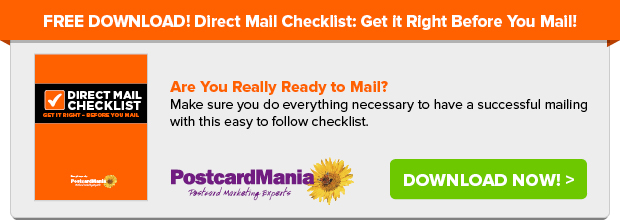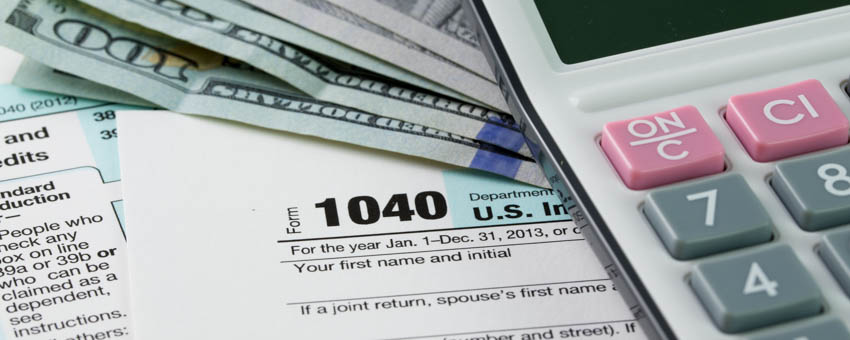The One Thing That Can MAKE or BREAK Your Postcard Campaign
Updated on July 15, 2021In small business marketing, it’s all about finding the right audience.
Think about this: If you were selling bait, who would you need to reach? Fishermen, right?
And if you sent your advertisement out to, say, an entire zip code, only a handful of the recipients would be fishermen (if that!). The rest of your mailing would most likely get tossed without ever being looked at!
So how do you find fishermen (or chefs, or parents, or middle-aged women… or whoever your target market might be)?
With a targeting mailing list!
A mailing list connects your product or service with the people who are most likely to use it, and is arguably the MOST IMPORTANT aspect of your postcard campaign!
There are several kinds to choose from — and picking the right one can mean the difference between raking in more revenue or throwing money down the drain.
So here’s a primer on the different types of mailing lists. Let’s go!
Consumer Lists
A consumer mailing list contains home addresses and/or email addresses of — you guessed it — consumers (people who buy products either at brick-and-mortar shops or online).
I’m a consumer. You’re a consumer. We’re all consumers, and you can believe that we’re on a mailing list somewhere.
A consumer list can be broken down by:
- Age
- Income
- Gender
- Whether they rent or own a home
- Home value
- And a host of other variables
Some companies include these options (called “selects”) in their price, while others add on a couple of pennies per record for this data.
When looking for a list company, do your research.
You want to make sure you’re getting FRESH data. If you have outdated or inaccurate information, you’re following dead-end leads and wasting time and money.
Your list company should:
- Update their data monthly
- Guarantee at least 90% deliverability (meaning 90% of your cards will be delivered to people on your list)
- Refund postage on bad addresses over 10%
- Allow unlimited use on lists (for a fee)
If you’re purchasing a “specialty list” (meaning everyone on the list has back pain or loves painting pottery), it’s important to ask how the list is compiled. How do they know everyone on the list has back pain? Did they buy it from a chiropractor?
Ask questions. Just because someone says they’re an expert doesn’t mean they are!
Speaking of how mailing lists are formed:
There are list companies and list compilers. Who compiles this data?
One compiler with consistently fresh data is InfoUSA. You can get your list counts from them at www.infousa.com.
(NOTE: if you’re planning on using PostcardMania for postcards, ask us for a list quote. Our pricing usually comes in lower than InfoUSA’s — because we offer so many products other than lists, we don’t need to mark them way up.)
But whether you buy from InfoUSA, us or any other broker, insist on fresh and accurate data. Don’t just buy the cheapest out there — or it’ll cost you in the long run.
Remember that postage is the most expensive part of any mailing. If you get an old list with more than 10% undeliverable returns (you’ll always get SOME — people move all the time!), you are literally throwing money away!
Subscriber Lists
Magazine publishers often rent out their subscriber lists, which is a great way to reach an audience with a shared interest.
If you sell kitchen accessories, for example, your prospects might read and subscribe to magazines about food and wine — of which there are many!
Before you rent one of these lists, make sure to discuss usage — sometimes they will slip in a one-time usage clause. (As we’ve discussed, mailing to any list just once is practically useless!) And if you have to pay each time you use it, it could get expensive — quick.
But:
Only you can determine whether or not that’s feasible for your business. If you get an incredible ROI (return on investment) from that list, it may well be worth paying to use it again and again.
Affiliate Companies: Sharing
Some companies are willing to share the lists they’ve built — for a price.
Here’s what I’m talking about:
If you’re a mortgage broker who frequently works with a particular title company, maybe they’ll be willing to give you their list of clients. In return, they might ask to have all your loans close with them.
Or if you’re a florist, you may ask to exchange with a bridal boutique. Maybe they give you a list of new gown customers and in return you provide the flowers at a trunk show.
Or perhaps you could trade lists with a caterer you’ve worked with.
Anyway, you see where I’m going with this. Work with other businesses with whom you share customers — but who aren’t competitors.
Get creative!
Business-to-Business
What if your customers are businesses?
Say you’re a software developer specializing in custom databases for a variety of businesses. It’s not very cost-effective to promote to EVERY SINGLE business, is it? You need to choose the types of businesses that benefit from the type of database you offer.
Perhaps your best clients have been dentists or insurance agencies — but there are so many different types, how do you prioritize?
Well:
There’s a way to narrow it down, which will help you find the right companies to market to! It’s called an SIC code.
An SIC (Standard Industrial Classification System) code is a four-digit code that is issued to businesses by the U.S. government in order to organize and identify all the different industries in the country. That way, data about these industries can be compiled and analyzed.
How do you read an SIC code?
The first two digits identify the major industry group, the third digit identifies the sub-industry group and the fourth digit identifies the exact industry.
For example:
- 36: Electronic & other electric equipment
- 367: Electronic components & accessories
- 3672: Printed circuit boards
If you happen to see the number 9 in the third or fourth spot, that means it’s a miscellaneous industry “not elsewhere classified” (NEC). (You can find industry SIC codes at https://www.osha.gov/pls/imis/sic_manual.html.)
Why am I telling you this?
If you’re promoting to a general type of business, you don’t need to know the SIC code. But in some instances, you definitely do.
For example:
Say you’re a dental lab that builds a specific type of bridge. Of course you want to promote to dentists. But perhaps the bridge you specialize in is only used by dental surgeons. There is one SIC code for “dentists” and another for “dental surgeons.”
Don’t leave it to a list company to figure this out for you — they don’t know your business like you do!
Opt-in Lists
This is a list that someone put themselves on voluntarily. They may have signed up for a newsletter from a certain company and answered “yes” to wanting to receive offers or information from that company’s affiliates.
But listen:
An “affiliate” is any company they sell that list to. THAT is the business transaction that “affiliates” them!
Think of how people get on an opt-in list: they checked a box that says companies can send them information. They’re not REQUESTING it. They’re just ALLOWING it.
Big difference.
Just something to keep in mind when using an opt-in list. It’s valuable information — use it wisely!
Clone Your Ideal Customers
Think about your best customers — you know, the ones who buy from you frequently and refer their family and friends to you!
What if you could clone them?
Well, you can’t do that — obviously! But there is a next best thing.
It’s a service that analyzes your customer list and matches each customer to one of 70 “clusters” that they have separated the entire population into.
It gives you all kinds of valuable information about your customers that you can’t find elsewhere, like:
- What magazines they read
- How much money they have saved
- If they are married or have kids
- What kind of car they drive
- Where they go on vacation
- What credit cards they use
- If they own or rent
And LOTS more details.
Once the analysis is complete, you can purchase a mailing list of people similar to your best customers!
I was skeptical at first, so I had a friend look himself up.
Guess what?
Everything in his “cluster” matched him EXACTLY. The only inaccuracy was that they said he read Popular Mechanics (he doesn’t).
It’s kind of creepy if you think about it — but it exists. And you can use it for your business!
Wondering which type of mailing list is right for your business? Call my marketing consultants at 800-628-1804 — it’s FREE! Or you can always email me directly at Joy.Gendusa@PostcardMania.com.
Best,
Joy
*This article is adapted from my new book, Postcard Marketing in an Online World. Click here to read it.

3 Comments
How do I contact the service that analyses my best customers and clones them?
Rubin, the customer list cloning service is one that we offer here at PostcardMania. If you’re interested, just give us a call at 800-628-1804.






very Good particularly the the SIC coding example and the cloning of customers